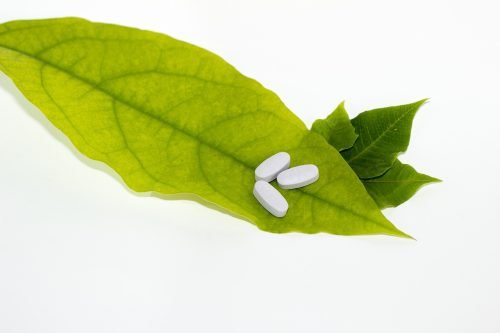What Is The Green Pill On The Streets?
Have you ever come across a mysterious green pill while strolling down the streets? Curiosity might have taken hold of you, wondering what purpose this pill serves and what its effects are. In this article, we will shed light on the enigma that is the green pill, unveiling its origins, potential uses, and any potential risks associated with its consumption. So, buckle up and get ready to satisfy your curiosity about the green pill that has been catching the attention of many passersby.
Overview of the Green Pill
Definition
The green pill refers to a specific type of pill that is typically associated with recreational drug use. It is known for its distinct green color and is often used by individuals seeking psychoactive effects. However, it is important to note that the green pill can come in various forms and may contain different substances, each with its own set of effects and risks.
Appearance
The green pill is recognizable by its vibrant green color, which is often achieved using food coloring or dyes. It can come in various shapes and sizes, such as round or oval, but the color is the most distinctive feature. This easily identifiable appearance has contributed to its popularity and recognition among drug users.
Origins
The origins of the green pill can be traced back to the illicit drug market, where it emerged as a popular choice for recreational drug users. The exact origins and manufacturing processes can vary, as the production of these pills is illegal. It is believed that the green pill is often produced in clandestine laboratories with little to no oversight, which raises concerns about quality control and potential dangers associated with its consumption.

Effects and Risks
Psychoactive effects
The green pill is typically taken to achieve psychoactive effects, which can vary depending on the specific substance contained within. The most common psychoactive effects associated with the green pill include altered perception, heightened sensory experiences, increased euphoria, and a sense of relaxation. However, it is important to note that these effects can also be accompanied by negative experiences, such as anxiety, paranoia, and even hallucinations.
Health risks
The use of the green pill carries several health risks, especially when consumed in excessive doses or in combination with other substances. One of the primary concerns is the potential for overdose, as the potency of the green pill can vary greatly. Other health risks include cardiovascular problems, respiratory issues, liver damage, and kidney dysfunction. Additionally, the green pill may be laced with other dangerous substances, further increasing the potential health risks.
Potential dangers
The consumption of the green pill poses several potential dangers and complications. Given the illegal and unregulated nature of its production, users can never be certain about the exact composition of the pill they are consuming. It is not uncommon for green pills to be adulterated with other drugs or toxic substances, which significantly increases the risk of adverse reactions. Moreover, the illicit nature of the green pill market often means that users have limited access to accurate information and support in case of emergencies or adverse effects.
Common Street Names
Other names for the green pill
The green pill is known by various street names that refer to its distinct appearance or effects. Some common alternative names for the green pill include “emerald,” “green apple,” “money,” “leprechaun,” and “shamrock.” These names are used among drug users and may vary depending on the regional drug culture.
Slang terms
Apart from the more formal names, there are several slang terms associated with the green pill. Often used to conceal the true nature of the substance, some popular slang terms include “greens,” “G-pops,” “smacks,” “leafies,” and “greenies.” These terms are often employed in drug-related conversations and can be a way for users to discreetly discuss the green pill without drawing unwanted attention.

Green Pill Usage
Recreational use
Recreational use is one of the primary purposes for which the green pill is consumed. Users typically seek the psychoactive effects provided by the pill, such as euphoria, relaxation, and altered perception. Additionally, the vibrant green color of the pill itself can contribute to its appeal among recreational drug users, as it provides a visually distinct experience.
Medicinal use
Unlike prescribed medications, the green pill is not typically used for medicinal purposes. Due to its illicit nature and lack of regulation, the green pill is not recognized as a legitimate treatment option for any specific medical condition. Therefore, it is crucial to emphasize that seeking medical advice from healthcare professionals and following prescribed treatments is always the recommended course of action for medical conditions.
Illegal use
The green pill is considered an illegal substance in most jurisdictions. Its production, distribution, and consumption fall outside the boundaries of the law, making it a controlled substance. Engaging in the illegal use of the green pill can result in criminal charges, fines, and imprisonment. It is important to be aware of the legal implications and to consider the potential consequences before becoming involved in the illicit use of the green
Detection and Identification
How to identify the green pill
Identifying the green pill can be challenging as illicit drug manufacturers often use various methods to make them visually appealing and easily concealable. However, there are some general characteristics that may help individuals identify the green pill. It is typically a solid tablet or capsule with a bright green color achieved through food coloring or dyes. It may also feature imprints or markings on the surface, identifying specific manufacturers or indicating the dosage strength.
Drug testing methods
Drug testing methods can be employed to detect the presence of the green pill in an individual’s system. Currently, the most common techniques for drug testing include urine, blood, and hair analysis. These tests can detect the presence of specific substances contained within the green pill, providing valuable information for medical professionals, law enforcement agencies, and substance abuse treatment centers. These methods play a vital role in identifying and addressing drug use within communities.
Legal Status
Classification of the green pill
The green pill is classified as a controlled substance in most countries. Its possession, distribution, and production are illegal under various drug control laws and regulations. The specific classification of the green pill may depend on the substance contained within, as different drugs carry different legal classifications. The illegality of the green pill underscores the inherent dangers and risks associated with its use.
Laws and regulations
Laws and regulations surrounding the green pill vary from country to country. In many jurisdictions, the possession, distribution, and production of the green pill are criminal offenses that carry severe penalties. Law enforcement agencies are actively involved in combating the distribution networks of the green pill, aiming to protect the wellbeing of individuals and communities. It is essential for individuals to be aware of the legal consequences and adhere to the laws and regulations regarding the green pill.
Emerging Trends
Increased prevalence
There has been an increase in the prevalence of the green pill in recent years. The vibrant green color and the allure of its psychoactive effects contribute to its popularity among certain segments of the population. Social media and online platforms have only further amplified the visibility of the green pill, making it more accessible and appealing to a wider audience. The rise in prevalence highlights the need for comprehensive education and awareness programs.
Variations of the green pill
As the demand for the green pill continues to grow, variations of the pill have emerged to cater to different user preferences. These variations can involve different substances, dosage strengths, or combinations with other drugs. The emergence of these variations further complicates the risks associated with the green pill, as users may unknowingly consume different substances or encounter unpredictable reactions. It is crucial for individuals to be cautious and informed about the specific green pill they are consuming.
Psychoactive Properties
Chemical composition
The green pill can contain a variety of substances, including but not limited to synthetic cathinones, amphetamines, benzodiazepines, or even substances not intended for human consumption. The specific chemical composition may vary depending on the source and manufacturing process. It is important to note that these substances can have varying degrees of potency and potential risks associated with their consumption.
Mode of action
The psychoactive properties of the green pill are primarily attributed to the specific substances it contains. The exact mode of action can vary depending on the chemical composition of the pill. For example, synthetic cathinones may stimulate the release of dopamine, norepinephrine, and serotonin, leading to a feeling of increased energy and euphoria. Understanding the mode of action of the green pill is crucial for individuals to fully grasp the potential risks and effects associated with its use.

Combating the Green Pill Crisis
Public awareness campaigns
public awareness campaigns are crucial in combating the green pill crisis. By providing accurate and comprehensive information about the dangers and risks associated with the green pill, these campaigns aim to educate the general public, drug users, and their communities. Public awareness campaigns can help dispel myths, provide resources for individuals seeking help, and promote safer alternatives to drug use.
Law enforcement efforts
Law enforcement plays a critical role in combating the distribution and use of the green pill. Through coordinated efforts, law enforcement agencies target drug manufacturing and distribution networks, aiming to disrupt the illicit supply chain. These efforts not only help reduce the availability of the green pill but also send a strong deterrent message to potential users and individuals involved in its production and distribution.
Treatment and support options
For individuals struggling with green pill addiction or those experiencing adverse effects, access to treatment and support options is vital. Substance abuse treatment centers, counseling services, and support groups can provide guidance, therapy, and resources to individuals seeking help. These resources can assist individuals in overcoming their addiction, addressing underlying issues, and building healthier lifestyles.
Conclusion
Summary
The green pill is a distinct type of pill associated with recreational drug use. It is recognizable by its vibrant green color and can come in various forms. The green pill offers psychoactive effects that can vary depending on the specific substance contained within, but it also carries health risks and potential dangers. Its usage involves both recreational and illegal purposes, and detecting and identifying the green pill can be challenging. Legally, the green pill is classified as a controlled substance, and laws and regulations surrounding it are in place to deter its use. Emerging trends indicate an increased prevalence and variations of the green pill, which pose challenges and risks. Understanding the psychoactive properties, combating the green pill crisis requires public awareness campaigns, law enforcement efforts, and available treatment and support options.
Future implications
The future of the green pill remains uncertain. As drug trends and market dynamics evolve, it is crucial to adapt strategies and responses to address emerging challenges and risks associated with the green pill. Continued research, education, and collaboration between various stakeholders are essential to combat the green pill crisis effectively. Promoting public awareness, strengthening law enforcement efforts, and expanding access to treatment and support options will be key in preventing further harm and protecting individuals and communities from the dangers of the green pill.




